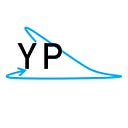COMPLEX NUMBERS, ALMOST LUDIC
1️⃣A little of history
First, it is good to highlight the difference between imaginary numbers and complex numbers. The nomenclature of imaginary number, as it appears, is due to René Decartes (1596–1650). Imaginary, in fact, is the term
which was baptized as ɩ by L. Euler (1707–1783). Euler used the formula
and proved the identity
But it was Cardano who introduced the algebraic number format
into algebra by trying to solve a third degree equation.
This format is what came to dominate the concept of complex numbers
and so named by Carl Friedrich Gauss (1777-1855).
Abraham de Moivre (1667-1754) reinterpreted the writings of Isaac Newton and built what today it is known as Moivre's theorem:
John Wallis (1616-1703) gave a geometric interpretation to the then imaginary number √−1. in the context of the geometric interpretation complex numbers count with the contribution of Jean-Robert Argand (1768-1822) with what we know today as the Argand diagram, a diagram that establishes a one-to-one correspondence between the set of complex numbers and the points in the plane, called of Argand plan. We also have the contribution of Caspar Wessel (1745–1818), who introduced the vector operations using the vectors argument.
It was William Rowan Hamilton (1805-65) who established the most complete and formal definition of complex numbers as a system of ordered pairs, with addition and multiplication attending to a formalism. In the field of analysis, complex numbers had the contribution of Augustin Louis Cauchy (1789-1857) who initiated the theory of complex functions.
Complex numbers have a wide application in electrical engineering, without which they would make extremely complex calculations. Complex number theory has strong application in modeling of airplane wings. Complex numbers are also used in mathematics to describe the new theory of fractals.
2️⃣Parabola curve
Conic is any curve generated by the intersection of a plane with a circular cone of two leaves. The parabola is a conic.
Every conic has a property that characterizes it. A parabola is the locus of points equidistant from its guideline and its focus.
The quadratic function defined algebraically by
has as a graphical representation in the orthogonal Cartesian plane xOy a parabola curve. See figure 1.
Let us now assume a quadratic function expressed by
In this configuration the function has no real roots. Let’s do it now
which implies
And let's simulate the zeros of the function, that is, make
so
that is,
and
where
Now let's introduce an innovation. Let's do this:
and
of course, in this way, both x’ and x’’ ∈ ℝ. And let’s write a square trinomial, f(x), using these values as roots:
performing the algebraic operations and simplifications will result in
Comparing the two functions,
the following conclusions are reached:
- their corresponding parabolas have the same geometric axis;
- Both distance themselves vertically from a constant δ value equal to
- the parabolas corresponding to the functions f(x) and I(u), together form a new type of reference curve, such as ellipse, hyperbola, etc.
The parabolas corresponding to the functions f(x) and I(u), together form a new type of reference curve, such as ellipse, hyperbola, etc. The parabola f(x) casts a shadow of the parabola I(u).
Let's apply this to the case of the parabola in Figure 1.
and
An arc of circle centered on the point B will determine the point E through which the shadow parabola will pass. Note that there is a one-to-one correspondence between the two parabolas. This is reproduced in the figure 2.
3️⃣Parabola Shadow Meaning
The functionality of complex numbers is something already known and is part of explicit knowledge. Practical examples are:
- in quantum physics.
- In integral calculus using the residue theorem.
- In the description of dynamic systems.
In all these cases, the mathematics of complex numbers involved seeks to circumvent a condition that at first appears to be impossible to solve.
Specifically, what will the shadow parabola mean that deserves an approach?
Complex numbers are used for their functionality. The shadow parabola appears as a trace of this condition. TThe counting function, which is the purpose of number systems, exists only because of the demands generated by our reality. The historical evolution of these demands pushed the stationary counting system to “jump” to complex numbers.
The existence of the shadow parabola curve suggests a condition of natural limitation in number systems when describing reality through them. So the complex number system becomes a necessary complementarity.
4️⃣Beyond the Parabola
This parabola approach is essentially didactic, but this does not mean that we are limited to the present interpretation. We can extend the same reasoning by means of an algorithm. For example, let it be a function G(x), associated with a process or physical state, and whose solution passes through the mathematical limitation suggested in our conjecture.
G(x) can be expanded using polynomial mathematical series, that is:
where x₀ is a convenient operating parameter.
Once this is done, given the appropriate conditions for this method of polynomial algebraic expansion, such polynomials obtained can be factored in such a way that they can be written as a product between a square trinomial I(u) and a subpolynomial:
If the trinomial I(u) has its shadow parabola then it will be written as
To which is associated the interpretation that there would be a nucleus in the process or state represented by G(x) with counting problems.
Going further, there is much difficulty today, for example, in the elaboration of a model of quantum-gravitational behavior in physical particles, perhaps because of counting limitations, that is, our current numerical system would not have the necessary representative elements for this.
